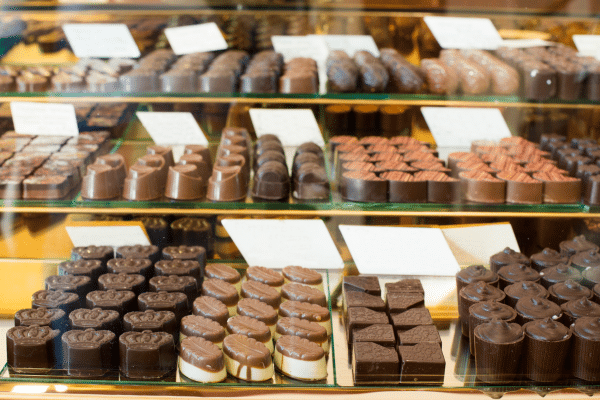Belgium is famous for many things, such as beer, waffles, lace, and of course, chocolate. But how did this small country become one of the world’s leading producers and exporters of this delicious treat? In this blog post, we will explore the history of Belgian chocolate, from its origins in the 17th century to its modern innovations and quality standards.
We will also introduce you to some of the best chocolate makers in Brussels, where you can find a variety of flavors and styles to suit your preferences. Whether you are a local or an expat, you will surely enjoy the rich and diverse chocolate culture of this city. So, get ready to indulge your sweet tooth and learn more about Belgian chocolate.

The first time chocolate arrived in Belgium was in the 17th century, when the region was under Spanish rule. The Spanish explorers had brought cocoa beans from South and Central America, where they had discovered the chocolate drink made by the native peoples. This drink was considered a luxury and a delicacy by the European nobility, who enjoyed it with sugar and spices.
One of the first recorded instances of chocolate being served in Belgium was in 1697, when Henri Escher, the mayor of Zurich, visited Brussels and was offered a cup of hot chocolate at the Grand Place. He was so impressed by the taste that he took the recipe back to Switzerland, which later became another major chocolate producer.
Chocolate remained a rare and expensive commodity until the 19th century, when Belgium colonized Congo and gained access to a large supply of cocoa beans. King Leopold II made Belgium the number one trader in cocoa and chocolate, and encouraged the development of the industry by granting tax exemptions and subsidies to chocolate makers.
One of the most influential figures in Belgian chocolate history was Jean Neuhaus, a Swiss pharmacist who moved to Brussels in 1857 and opened a shop in the Galeries Royales Saint-Hubert. He started by selling medicinal chocolates coated with nuts and fruits, but soon realized that his customers preferred the chocolate itself. In 1912, his grandson Jean Neuhaus Jr. invented the praline, a hollow chocolate shell filled with cream, ganache, or nougat. He also created the ballotin, a special box designed to protect and present the pralines.
Belgian chocolate is known for its high quality and purity, which are regulated by law since 1894. The law states that at least 35% of cocoa must be used in chocolate production, and prohibits the use of vegetable fats or other additives that could alter the taste or texture of the chocolate. This ensures that Belgian chocolate has a rich flavor and a smooth melt-in-the-mouth feel.
In addition to the legal requirements, there are also voluntary standards that most Belgian chocolate makers adhere to. In 2007, the European Union introduced the “Belgian Chocolate Code”, which specifies that all stages of chocolate production must take place in Belgium, from roasting and grinding the cocoa beans to mixing and conching the chocolate mass.
Moreover, Belgian chocolate makers follow traditional methods and recipes that have been passed down for generations. They also use high-quality ingredients, such as fresh cream, butter, nuts, fruits, and natural flavors. They pay attention to every detail, from selecting the best cocoa beans to wrapping each praline by hand.
Belgian chocolate is not only rooted in tradition but also open to innovation. Today, Belgian chocolatiers are constantly experimenting with new flavors, shapes, textures, and techniques to create original and surprising products that appeal to different tastes and preferences.
Some examples of modern trends in Belgian chocolate are:
If you are an expat living in Brussels, or just visiting the city for a short time, you might be wondering where to find the best chocolate in town. After all, Belgium is famous for its high-quality and delicious chocolate, and Brussels is home to some of the most renowned chocolatiers in the world. To help you satisfy your sweet tooth, we have compiled a list of the best chocolatiers in Brussels for expats, based on their reputation, variety, creativity, and location. Here they are:
Belgian chocolate is a product of history, culture, and craftsmanship. It has a long and rich tradition that dates back to the 17th century, when chocolate was first introduced to Belgium by the Spanish. It has a high quality and purity that are guaranteed by law and by voluntary standards. It has a diversity and creativity that are driven by innovation and experimentation. It is a treat that can satisfy any palate and occasion, from the classic praline to the modern bean-to-bar. It is, in short, a sweet symbol of Belgium’s identity and excellence.
Voer uw gebruikersnaam of e-mailadres in. U ontvangt per e-mail een link om een nieuw wachtwoord aan te maken.